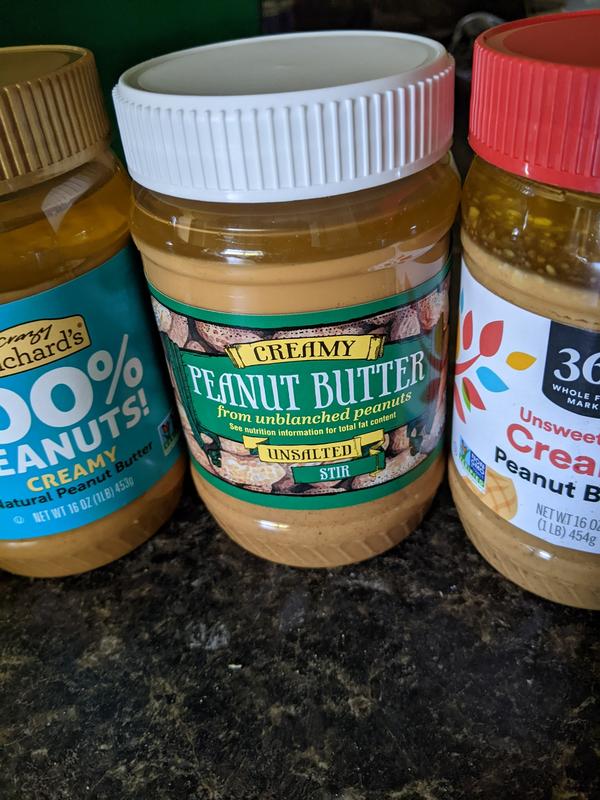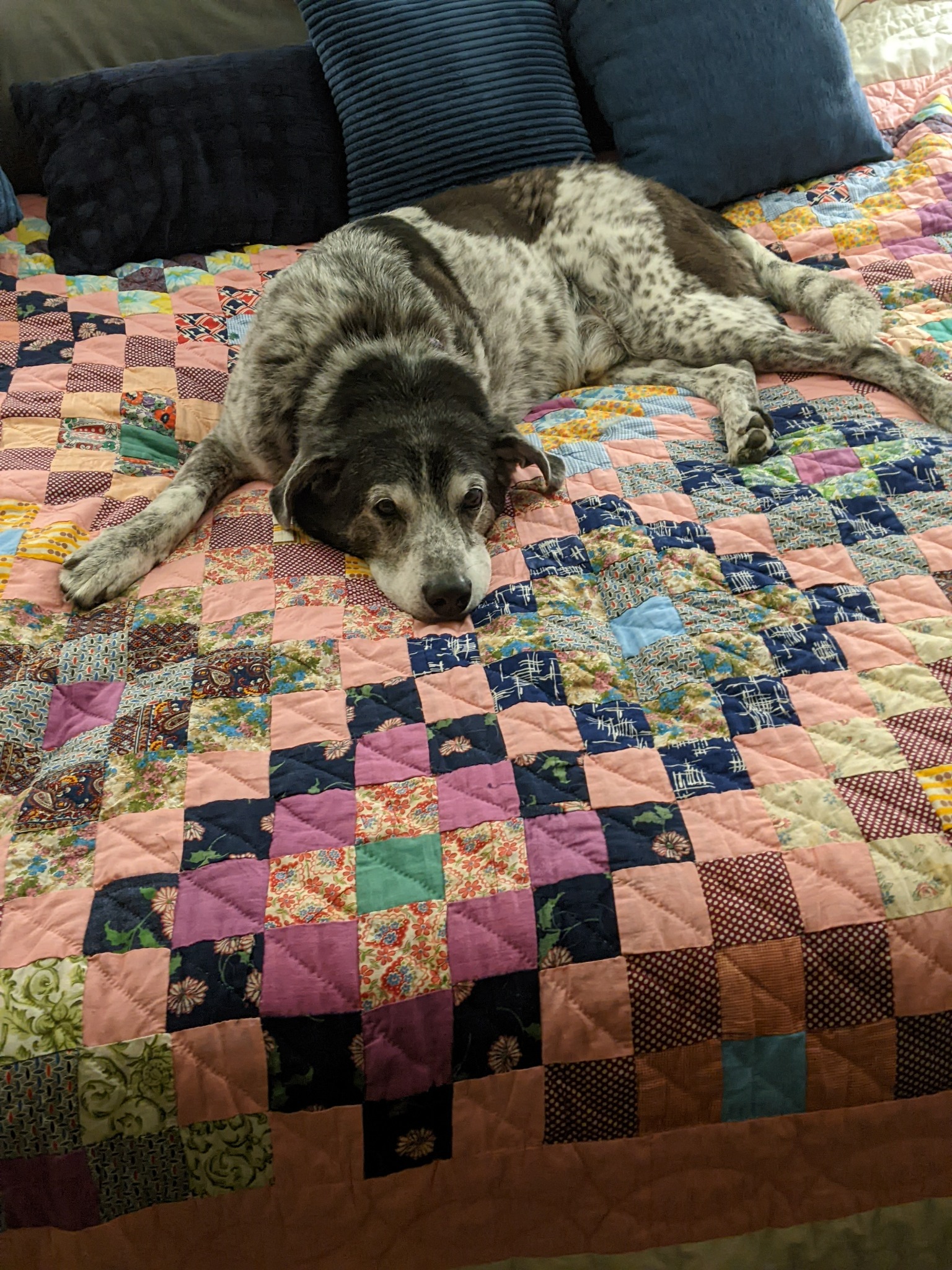

Mayhem on Three
By Melissa Behrend
Mayhem hops down the hallway ahead of me. A speed demon on three legs. I race to catch up. “Hey, Hoppy! Be careful!” As if he understood the word or would listen even if he did. He zooms around the corner, sliding a little on the hardwood, but righting himself before a wipeout occurs.
I reach the living room just in time to see him flop down on his favorite blue rug. Soft and fuzzy, probably helps cradle his ungraceful dismount. For a tripod to lie down, at least ours, who lost his front left leg, he has to lean on his front right, catching all his weight, as his back half plops down. Then he stretches his front leg out in increments, slowly lowering it to the ground. The glaring red patch on his elbow tells its own story. Hopefully the paw butter I apply to his elbow a couple times a week soothes any ouchies there, but one never knows. He sure does like the taste of it, I can tell you that—and I can also tell you without a doubt a dog can lick his own elbow.
“Tired, bud?”
He settles in, nuzzling his nose next to his front paw, then drops his head so his face is lying on its side. Looks uncomfortable to me, but since his amputation, this has been his preferred posture.
Settling beside him on the floor, I rub his shoulder blade. His one shoulder blade. When he’s in motion, his right leg and shoulder have to do a lot of work, hauling around seventy pounds of dog. He must be sore, but he can’t tell me, so I give him a little massage. Smiling down at him, I still have to fight tears. So conflicted—happy, but sad. I’ve been this way since day one, since the vet gave us the news.
We’d just dropped our other dog, Chaos, off for ACL surgery (sorry, CCL in dogs). He’d torn his CCL and his patellar tendon, so he was undergoing major surgery. None of us was taking it well. Chaos was twelve, and I worried his advanced age would make him susceptible to, well, problems. The surgeon told us there was nothing to worry about, but worrying is what I do best.
Once we returned home, my husband went back to work and I scarfed down granola while catching up on the news, doomscrolling. I could hear my husband answer a call in his office, but since he was at work, I tuned him out. Didn’t concern me.
Until it did.
Minutes later, he opened the door, causing me to jump. The door sticks in an unholy way, creating a sound no one in our house could stand. I looked up and my heart stopped. His eyes were red-rimmed, his gaze direct, searching for my eyes.
He walked over to me as I stood; he grabbed me in a tight bear hug. “What happened? Is Chaos--?”
“It’s Mayhem. It’s cancer.”
“What?” I couldn’t breathe. I pushed back, needing air. Or tried to, anyway. My husband didn’t want to let go--maybe he couldn’t.
“The x-ray showed a mass. I guess our vet didn’t know what it was, so she sent it to a specialist? Or something. I didn’t really understand that part. But the specialist said the mass was osteosarcoma. Bone cancer.”
“And that’s why he’s limping?” I sat down heavily in my chair, trying to make it make sense. We’d taken Mayhem in for an x-ray earlier in the week because he’d been limping on and off for days in his front left leg. He’d get better, then he’d go right back to limping. We assumed he’d jumped off the bed and tweaked it, but since it was lingering, we decided to get it checked out. What stood out to me now, and what upset me was, “But she said she didn’t see anything? On Monday, when we were there, she said there was nothing. She said to let him rest!” I could feel, and hear, my voice rising. I was losing control a bit, but I didn’t care. I was angry. At the vet. At life. At cancer, at—wait, how did dogs get cancer? “Did she say how he got it?”
My husband shook his head. “No, but I think it’s genetics.”
“So, it’s nothing we did?” I’d started to cry, worrying I’d done something to cause my boy’s cancer. When I finally settled, I asked what was next. What we could do. It seemed our vet said, well, nothing. She’d basically told my husband we should say our goodbyes. This didn’t sit well with either of us. The two of us got busy Googling. I researched homeopathic routes, CBD, mushrooms, even acupuncture, while my husband’s research led him to a clinical trial for something dubbed ‘The Yale Vaccine’.
The Yale Vaccine was being given to dogs with osteosarcoma; it’s an immunotherapy that trains a dog’s immune system to look for cancer cells and attack them. The only problem? The vaccine was only available in eleven places around the United States. But one of them happened to be in Edmonds, Washington, about an hour’s drive from us. We contacted the facility, got an immediate appointment, and were there the next week.
We consulted with the oncologist who recommended amputation. She said coupled with the immunotherapy, it would save Mayhem’s life; in fact, it would add years to his life. If we did the immunotherapy without the amputation, it might add months. Once we’d talked with the oncologist, the decision was easy. Have Mayhem on three legs or have no Mayhem at all.
We went with the amputation. He had the surgery and began the immunotherapy the same day. He went back two weeks later for his first chemo, and then every two to three weeks after that, for a total of five sessions of chemo, and a total of three sessions of the immunotherapy.
To be honest, the first few days and nights after the amputation were horrendous. I questioned our decision. No one slept. Mayhem had dysphoria; he didn’t know where he was or who we were. He cried, he whined, he was in pain…he couldn’t settle. He was up all night.
But by day three, he was a terror on three legs. We had to keep a harness on him, one with a handle, so we could grab him as he got up and took off, to help steady him. He ran all over the place, taking off like a daredevil. The guy was crazy.
He quickly became a neighborhood celebrity, too. While I feared kids would make fun when we were out on walks, everyone loves him. Kids and adults all want to pet the tripawd. We used to go on hour-long several mile walks; and while our walks are still long, they’re long in time, not distance. Mayhem hops on three legs, and I mean hops. He has to throw his seventy pounds in the air to move along. He’ll take a few hops, rest, then do it again. It’s tough, so we bring water, no matter the temperature.
We’re seven months out and I’m so glad we went along with the doc’s advice, but I will admit, I wasn’t sure at first. Losing a front leg is tougher on a dog than a back leg, simply because it’s harder to move around. The front legs do a lot of the heavy lifting. At his age, I didn’t know how he’d adjust—or if he would. I worried his quality of life would suffer; I worried he wouldn’t be happy. I worried he’d be left out on walks, worried he wouldn’t be able to do his favorite things (and to be fair, there are things can’t do, or can’t do well. Dog beds with bumpers? Ouch, he always falls either in or out of the bed…). Chemo wasn’t always easy; there were times he threw up, there were times his white blood cell count was low. The expense has been…well, a lot, but he’s worth it.
Two weeks ago, he stood in the dining room and gave his brother a look. A look we know very well. One his brother knows very well, too. His brother assumed a defensive stance and it was on. My husband and I looked at one another, torn. Should we stop this roughhousing? Or let them play? In the end we sort of refereed like we did in the old days, let them play but stood close by, so we could step in if needed. This was the first time they’d played since Mayhem had lost his leg. Love to see it. Hope to see more of it.
